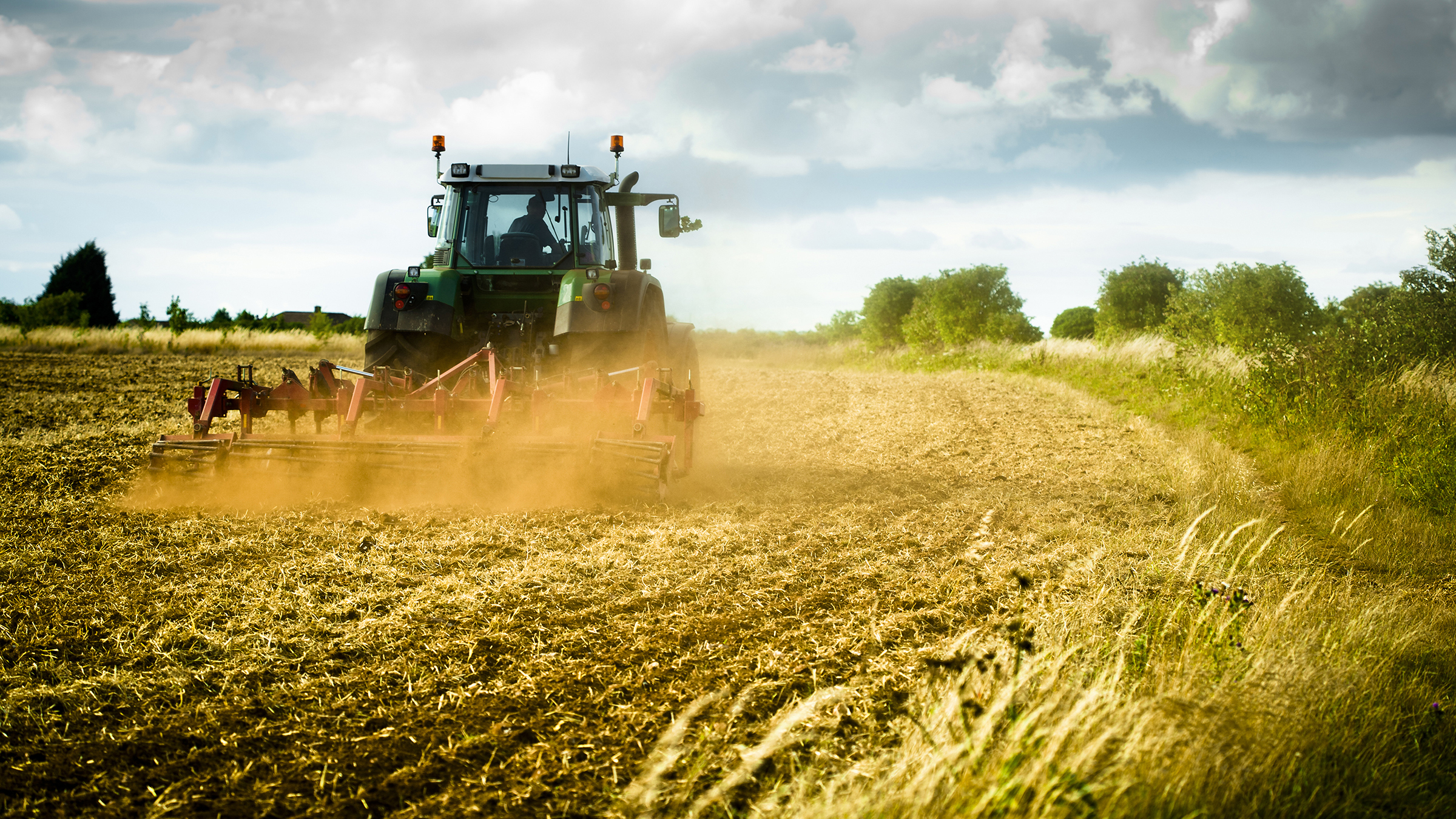Auburn’s Production Agriculture Research (PAR) grant program personifies the university’s land-grant research mission by communicating directly with Alabama’s farmers and addressing their most immediate needs.
“The PAR grants program, more than any other, sets its priorities according to the needs of the farmers in the state who are affected the most by agricultural research,” said Art Appel, interim associate dean for research in the College of Agriculture and interim associate director of the Alabama Agricultural Experiment Station (AAES).
Established in 2017, the grants are administered through the AAES with USDA National Institute of Food and Agriculture Hatch funding and matching state appropriations. Many of the two-year, $50,000 PAR grants support combining research and extension projects to address current farming problems in a timely manner through applied research.
Research proposals from faculty are reviewed in an intensive process involving stakeholders and scientists. One of the organizations representing stakeholders is the Alabama Farmers Federation.
“To provide the best impact to farmers, we believe taking their needs into account is paramount,” said Brian Hardin, director of governmental and agricultural programs for the federation.
“The PAR grant program is set up to do that and we thank Auburn University’s College of Agriculture and the School of Forestry & Wildlife Sciences for recognizing the importance,” Hardin said. “Through the review process, we are able to provide the perspective of our members from working with them each day in their areas of production.”
One of the federation’s priorities, Hardin said, is to help connect Alabama farmers with researchers at Auburn University. “Through communication, scientist can better understand the challenges facing farmers and better know what questions need to be addressed,” he said.
Making the cut
For 2021, 10 PAR proposals were received and six were selected for funding.
One of the research projects, led by Zhaofei Fan, associate professor in the School of Forestry & Wildlife Sciences, aims to preserve the vanishing longleaf pine forest ecosystems.
Longleaf pine forest ecosystems once covered nearly two-thirds of the Southeastern U.S. forestland. Excessive utilization and land conversion, long-term fire suppression, and regeneration failures reduced longleaf acreage to less than 3% of its original extent before concerns were raised about the loss.
Nearly two-thirds of all species that are recognized as declining, threatened or endangered are associated with longleaf pine ecosystems, Fan said. This forest ecosystem is deemed so important to the region that all federal land-holding agencies and state forestry commissions in the range of longleaf currently have initiated different kinds of restoration programs.
“Despite established programs and restoration efforts that extend beyond public land to private properties, longleaf ecosystem acreage still is declining due to mismanagements largely caused by inadequate knowledge of longleaf pine regeneration ecology,” Fan said.
“We propose an integrated, multiscale approach to study the mechanisms and associated factors affecting longleaf regeneration and evaluate the effectiveness of designed treatments on varying site and stand conditions.”
Specifically, the proposed work will address two fundamental needs in longleaf pine regeneration and conservation: 1) development of a modern regeneration model that accounts for fire treatments and local environmental variations to quantify the great uncertainty of regeneration; and 2) evaluating the long-term effects of prescribed fire and management activities to develop suitable management alternatives to maximize regeneration success rate.
Another project is considering one of the most important priorities of the USDA Science Blueprint, which is the development of new strategies and management practices to mitigate and address climate change.
“The Southeastern peach industry faces multiple challenges every year regarding production and demand,” said Melba Salazar-Gutierrez, assistant professor in the College of Agriculture’s Department of Horticulture and leader of the project.
“Climate variability tops the list of challenges, with more incidences of warm winters and spring freezes effecting the chilling accumulation needed,” said Salazar-Gutierrez. “A phenology study is one approach to observe the effects of climate variability.”
The overall goal of the proposal, she said, is to understand peach dormancy and the phenology dynamics of key developmental stages as a function of environmental factors under Alabama climate conditions for the development of a preliminary dynamic model that accounts for chill and heat accumulation to supports crop management practices.
“The results of this preliminary study will provide valuable information to determine the start of peach development for selected cultivars,” she said. “Any delay in the initial developmental stages such as the first swell will have an impact on the entire cycle.”
Researchers also continue to seek ways to boost the industrial hemp industry in Alabama. Alvaro Sanz-Saez, an assistant professor in the Department of Crop, Soil and Environmental Sciences, is leading a project to help insure that growers don’t lose their crops due to high THC levels.
Industrial hemp growers in the U.S. can lose their entire crop if the tetrahydrocannabinol (THC) content exceeds the federal legal limit. It has been hypothesized that THC content in hemp can increase when exposed to drought, however, this has not been tested in field conditions due to the historic restrictions on hemp production.
In addition, the quantitative effects of drought stress on plant yield and THC and cannabidiol (CBD) content are unknown. With this lack of information, growers are unaware of the ideal harvest times to maximize yield and CBD content while still maintaining compliant THC levels.
“In cooperation with a regional hemp grower and an AAES Experiment Station, we will study the effects of drought on yield, and whether different intensities and timings of drought alter THC content,” Sanz-Saez said.
Project directors will train a hemp grower and a distance master’s student in the Crop, Soil & Environmental Sciences Department. The farmer also will be trained in and responsible for Extension programming to deliver updates on the research.
This peer education will have a strong impact on grower education and subsequent adoption of sustainable practices.
Invasive plant species continue to be a problem for Alabama’s farmers, and one research project looks to reduce this threat through mapping.
“Invasive plant species have rapidly spread across the Southeastern U.S., and with the capability to establish and proliferate following disturbances such as hurricanes and floods, they pose substantial threats to the health and sustainability of Alabama’s coastal ecosystems,” said Lana Narine, leader of the project and assistant professor in the School of Forestry & Wildlife Sciences.
Accurate mapping of invasive species is crucial for determining the extent of invasions, uncovering patterns of invasion, and identifying areas requiring immediate management, Narine said.
By integrating multi-source data such as aerial imagery, light detection and ranging (lidar) and ancillary data, spatially comprehensive mapped products of invasive species across landscapes can be generated, which is otherwise time-consuming or too costly from only field inventory.
“Focusing on two of Alabama’s worst invasive species Triadica sebifera, and Ligustrum sinese within two coastal counties in southern Alabama, Baldwin and Mobile Counties, specific objectives of this study serve to 1) investigate approaches for effectively detecting and mapping current invasive plant conditions within Alabama’s coastal areas, using airborne lidar data and multispectral imagery: and 2) model the impact of invasive plants on wetlands, coastal prairies and forests to evaluate the effectiveness of relevant monitoring and control measures,” she said.
Research in the School of Fisheries, Aquaculture and Aquatic Sciences is aimed at reducing losses to a major fish pathogen.
“Virulent Aeromonas hydrophila (vAh) is a major fish pathogen of interest to catfish farmers in the Southern region, particularly in west Alabama,” said Tim Bruce, assistant professor and project research leader.
This bacterium is responsible for large-scale losses and results in decreased yields from the ponds as well as increased operational expenses from feed-based antibiotic treatments, Bruce said.
Recently, the Liles Laboratory has identified a probiotic organism, a Bacillus sp. (AP193), that has shown promise as a potential feed-based therapeutant to combat vAh on catfish farms. Further, AP193 has been shown to enhance growth performance and influence the intestinal microbe communities, which are added benefits to feeding this potential therapeutant.
“Given these production benefits for catfish producers, there is a need to optimize the delivery of this probiotic strain and evaluate immune parameters with catfish fed AP193 to further investigate potential mechanisms of protection,” Bruce said.
In the current project, the team of Bruce and Mark Liles, associate dean, Department of Biological Sciences, will aim to investigate the ideal feeding schedule (short- or long-term) of AP193 so that both growth and survival following an experimental challenge with vAh are optimized.
“In a follow-on study, we will use this ideal feeding strategy to investigate any probiotic-related protection offered when catfish experience mixed infections, with both vAh and other prevalent pathogens found in production ponds,” he said.
Another aquatics-related project seeks to increase the profitability of catfish production in Alabama.
“There is a shortage of channel catfish female and blue catfish male hybrid catfish fingerlings for farmers in Alabama, which adversely affects production, profitability and sustainability,” said Rex Dunham, professor and project leader.
Having enough blue catfish sperm available to make the hybrid is one of the main bottlenecks, he said.
“Our approach will be to sterilize common carp, which are capable of producing copious quantities of sperm, by inducing triploidy (an extra set of chromosomes) and introduce blue catfish stem cells into these hatchlings,” Dunham said.
The stem cells should colonize and form gonads, sperm or eggs in the host carp depending upon the sex. The males are anticipated to make copious amounts of blue catfish sperm (making carp a blue catfish sperm factory) that can be harvested to make hybrid catfish embryo production both more efficient and more productive.
“We expect to produce common carp males that can be used as blue catfish sperm factories,” Dunham said. “The impact will be greater hybrid catfish fingerling availability, leading to greater and more profitable catfish production in Alabama.”
Overcoming this obstacle could lead to Alabama being a greater player in fingerling and foodfish catfish production. It also may lead to a new business opportunity for Alabama aquaculture to produce these xenogenic carp as blue catfish sperm factories.
Auburn’s PAR grants consider needs of Alabama farmers

Contact Us

Paul Hollis is a communications specialist with the College of Agriculture and program coordinator and instructor for the Agricultural Communications program. He received his bachelor's and master's degrees from Auburn University.
Recent News
Related Articles

Maity awarded $300,000 in support of plant research and agricultural production systems
The USDA National Institute of Food and Agriculture (NIFA) Agriculture and Food Research Initiative (AFRI) recently awarded Aniruddha Maity a $300,000 grant to….

Brewer awarded $434,000 to study using existing water infrastructure for limiting invasive carp
The U.S. Fish and Wildlife Service, in consultation with the Mississippi Department of Wildlife, Fisheries, and Parks, has awarded Dr. Shannon Brewer a $433, 867 grant to….

Auburn research looks to boost average peanut yields
U.S. peanut producers have seen peaks and valleys in their yields over the years, prompting researchers at Auburn University to…
